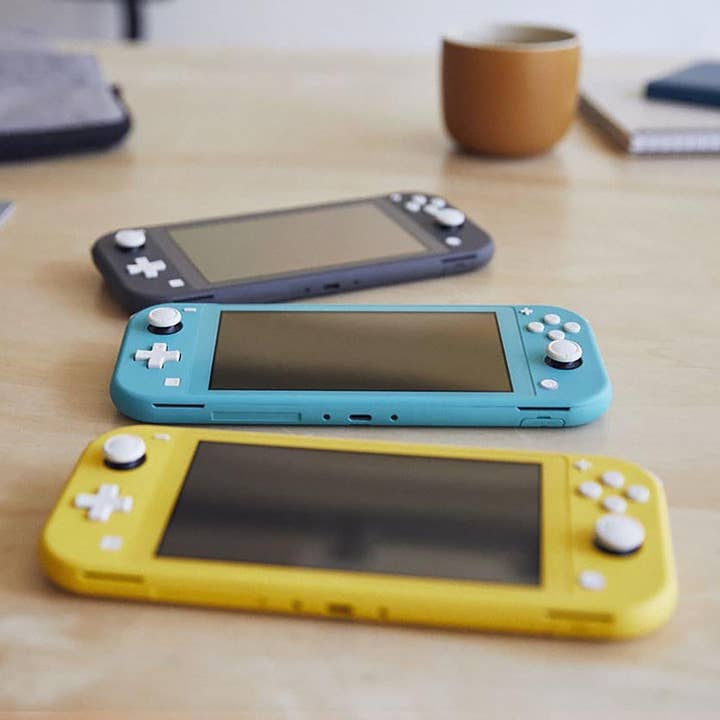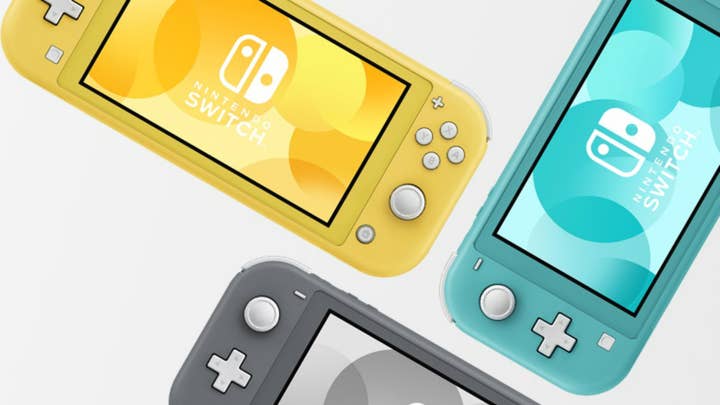Nintendo Switch Lite: Critical Consensus
Few see any faults with Nintendo's new hardware, and even its critics concede that it's just about perfect for handheld gaming
Nintendo is receiving all manner of compliments for its latest hardware, but special praise must be reserved for its name -- a near perfect paradox. The Switch Lite is, after all, light on pretty much everything that gave the original Switch its name.
No Joy-Cons for out-of-the-box multiplayer, no kickstand to turn the diminutive screen into something around which friends can gather, and, crucially, no option to hook connect the hardware to a television and move the experience from your hands into the front room. The Switch Lite may be priced at $200 rather than $300, but it loses a lot in the name of reducing costs.
This is the underlying argument in Kotaku's review, in which Mike Fahey simultaneously lamented what is missing from the Switch Lite while also proclaiming it "one of the finest handheld gaming devices I've ever used." Fahey is not alone in praising the Switch Lite in those terms, but few critics articulate its shortcomings so clearly.
"'Switch Lacking' would be more accurate, if far less marketable"
Kotaku
"It still supports near-field communication for Amiibo support, and has a built-in accelerometer and gyroscope for motion control, so not all of the Switch's extra features have been stripped away. But most of them have," Fahey wrote. "As has been pointed out time and time again since the hardware was announced in July, there's not much 'Switch' in the Switch Lite. 'Switch Lacking' would be more accurate, if far less marketable.
"If my only desire was to play Switch games in handheld mode, I would choose the Switch Lite over the regular Switch, hands down... But the original does a whole lot of cool stuff the Switch Lite does not do -- stuff I've grown used to, and now feel awkward going without. Removing Joy-Cons to play multiplayer games is a Switch feature I hardly ever use, but when I have, it's led to some pretty magical moments. My gaming is normally a personal thing, but the ability to make it social with the click of my Switch means it doesn't have to be."
For many critics, however, those moments were evidently fewer and further between, or altogether less magical. An admission that appears over and again across the many Switch reviews that have been published is how much handheld mode is the dominant use case for the original Switch. Sure, the Joy-Cons can be split up for multiplayer gaming, and it can sit in a dock and become a big-screen device, but a significant number of people were largely using it on the go.

US Gamer's Mike Williams is firmly in that camp. In his review, Williams praised Nintendo for "[making] cuts in all the right places." Indeed, he goes further still, declaring the Switch Lite "the system I wanted in the first place."
"As a purely portable device, [the Switch is] a bit ungainly and its weight is poorly distributed," Williams wrote. "On top of that, the console-level games on a portable platform means the battery life hasn't always been great. I travel nowhere without my hefty battery pack in tow.
"So you've lost a lot to cut $100 of hardware from the original Switch. What you gain is a more portable system. While the Switch is four inches high and 9.4 inches long, the Switch Lite cuts that down to 3.6 inches high and 8.2 inches long. The weight also drops from .88 lbs down to .61 lbs. The 6.2-inch screen shrinks down to 5.5 inches, but retains the same 1280x720 resolution."
The resulting console has fewer features, but it does the job of being a handheld console far better than the Switch delivered on either of its two forms. The original Switch was a jack of two trades. The Switch Lite is a master of one.
"The hand-feel of the Switch Lite is simply fantastic. The weight and heft of the Lite are spot on"
US Gamer
"The hand-feel of the Switch Lite is simply fantastic," Williams continued. "The weight and heft of the Lite are spot on. To test, I literally laid down on a couch in the demo area, and held the Lite above my head. At home, this is how I usually play the Switch. The problem with the original Switch is that the weight tends to cause me to drop the Switch on my chest and face, and the length of the system makes it awkward when playing on my side.
"The Switch Lite side-steps both problems, and felt great when I was testing it in both positions. Even better? The Switch Lite just about fit in my pockets! That only helps dudes with proper pants pockets -- sorry ladies -- but it's a big change for me."
According to Andrew Webster on The Verge, despite the various cuts Nintendo made to the hardware and its functionality, the Switch Lite is actually superior to the Switch in a few notable ways. Webster shares Williams' enthusiasm for the "more grippy and comfortable" plastic case, while also noting its longer battery life, and how much sharper the screen appears due to being smaller with the same resolution. And then there's the D-pad, which is a step up from the Switch's four directional buttons.
"The original Switch featured directional buttons, which were disconnected from each other and made playing classic games -- an increasingly attractive feature of the Switch -- somewhat of a pain," Webster wrote. "But the new d-pad is responsive and comfortable. I tried it with a range of games, including Celeste, Super Mario Maker 2, Super Mario World, and the Mega Man Legacy Collection, and it just felt right. I'm still terrible at Mega Man 2, but at least now it's my fault for missing a jump, not the controls."
"Who would have believed it? The Switch that cannot actually switch is an absolute triumph"
Digital Foundry
Indeed, perhaps the only consistent complaint about the Switch Lite as a device for playing games on the go is a tangent from the size of its screen. As TechRadar's Vic Hood pointed out, some Switch games feature small in-game text (Fire Emblem Three Houses was cited in numerous reviews), which is all the more difficult to read on the Switch Lite's screen. It's a small problem, Hood said, "but slightly odd for onlookers on a morning commute."
Other problems are difficult to find -- even after reading a dozen reviews -- save for those that are simply conscious choices on Nintendo's part to build this smaller, lighter, more focused and robust iteration of the hardware that turned its fortunes around. The Switch Lite may not be an obvious buy for those who already own a Switch, but will be sorely tempting for those who resisted the Switch due to having an Xbox or PlayStation as their big-screen console.
And, happily for Nintendo's shareholders, for anyone remotely interested in a portable console in the vein of the DS, the Switch Lite will be close to a no-brainer this Christmas.
"In conclusion, it's very difficult to level much criticism at Switch Lite," said Digital Foundry's Rich Leadbetter, in a review on Eurogamer. "Nintendo's miniaturisation effort has paid off handsomely with a cheaper, cut-back machine that still ranks as one of the best handhelds I've ever used. It's nicely put together with a brilliant screen and arguably, it possesses a more agreeable portable form-factor than its siblings.
"Who would have believed it? The Switch that cannot actually switch is an absolute triumph; a pared back rendition of the hardware that demonstrates quite spectacularly that beyond the hybrid console functionality that defined the system, this was always a handheld at its core -- and a brilliant one at that."

